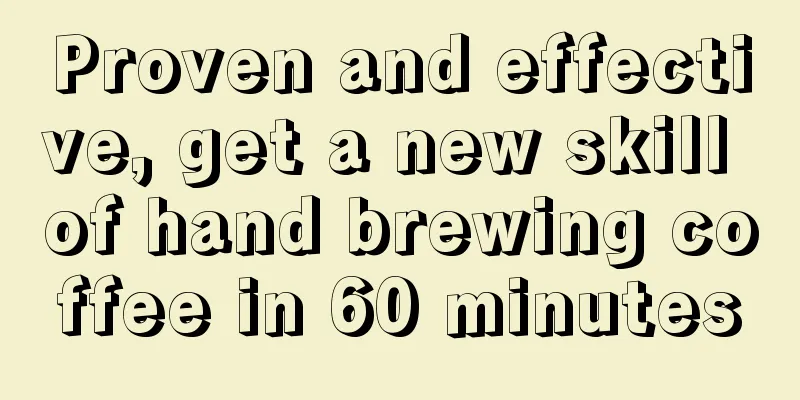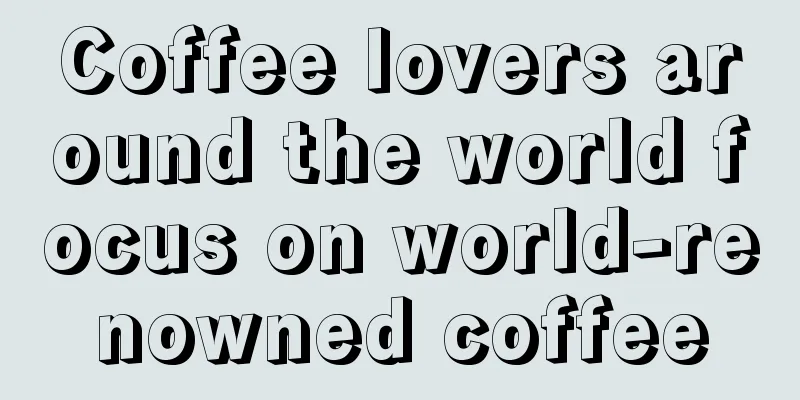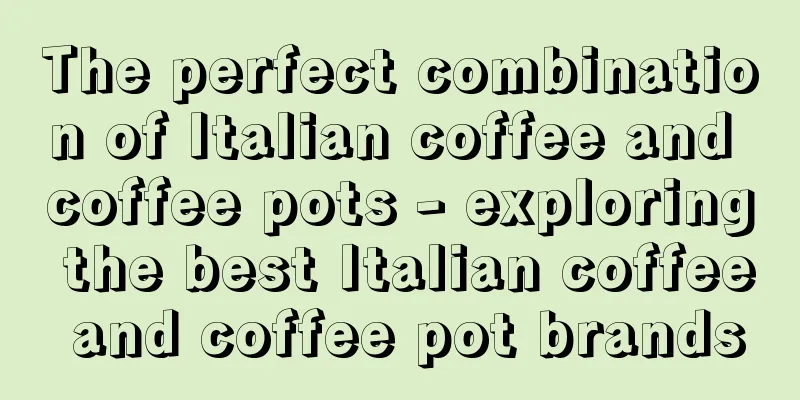How to brew a good cup of coffee with V60 (in-depth article)

|
For now, I'll focus on the V60 because it's cheaper, simpler, and easier to carry around. A conical filter cup, usually made of plastic or ceramic, used for hand brewing coffee. Why use V60The V60 is easy to clean and travel with, making it a much more practical option than a lower-end drip machine if you want to experiment with new brewing recipes. In my opinion, there are three challenges when using the V60: (1) consistency from brew to brew/cup to cup (2) maintaining brew temperature while brewing (3) when all brewing variables are intertwined, you have less control over any particular variable. 2. Brewing variables There are several brewing variables that affect coffee flavor and strength:
When brewing with the V60, the finer the grind, the higher the coffee concentration and the higher the extraction rate for a fixed contact time between water and coffee grounds. However, fine grinding will also slow down the flow of water through the coffee grounds bed (the path of water through the coffee grounds bed is longer, and very fine coffee grounds may also clog the filter paper), which also means that your coffee will be stronger and have a higher extraction rate. In other words, V60 brewing is very sensitive to grind size. Another important aspect of grind size is that most grinders are unable to produce a very narrow (focused) range of particle sizes. High-quality grinders can produce a narrower distribution of particle sizes, which is a good thing because it helps every coffee particle to be extracted equally . 4. Coffee freshness One of the difficulties in brewing good coffee is keeping the beans fresh. In my personal experience, I have found that it is best to buy/brew the coffee beans within 1 to 3 weeks after they have been roasted (assuming they have been packaged properly) . If the coffee is fresher than this, it will release a lot of carbon dioxide (accumulated during the roasting process), making it difficult to brew. If it is more than this time, the coffee flavor will be significantly lacking. The four main factors that affect the freshness of coffee beans are: oxygen, humidity, heat, and UV rays , so you should make sure your coffee beans are not affected by all four. When you buy a bag of fresh beans, make sure the packaging is not see-through and has a one-way valve; the one-way valve expels the coffee's carbon dioxide (which accumulates during the roasting process) outward and prevents oxygen from entering the bag from the outside. Ideally, the bag should also have a zippered, reclosable opening, and the packaging should be small enough to last you a week or so. Avoid buying pre-ground coffee; ground coffee goes bad several levels faster. If you can, store the coffee bag upside down so that most of the carbon dioxide can remain in the bag and prevent oxidation. Once the coffee package is opened, the flavor of the coffee begins to decline. This is because the carbon dioxide in the bag is immediately lost (usually with a large volatile aroma), and the beans are not protected from oxidation. Every time you reopen and close the bag, more oxygen will enter, accelerating the aging of the coffee. One way to solve this problem is to divide the large bag of coffee beans you bought into several smaller bags. Make sure the bags are food grade! I currently use 7.7×10 cm aluminum plastic bags, which can store 22 grams of coffee beans. Some other non-food grade plastic bags have a very unpleasant plastic smell. Use the smallest bags possible to minimize the amount of air in the bag. (Also consider using a cheap vacuum sealer) I recommend doing this right after you open your latest purchase of fresh coffee. Don't forget to store these bags in an opaque container away from heat and moisture. If you want to get a little crazy you can fill the bags/jars with pressurized inert gas usually carbon dioxide, nitrogen and argon. If your goal is to keep some fresh coffee for later use (say, for more than a month), I recommend freezing your beans. You must proceed with caution, however; while freezing slows down the flavor decay process, it can also expose the beans to unpleasant odors and moisture if not handled properly. Home Vacuum Sealer As a first step, I strongly recommend that you pack the beans in small packages and measure the amount of beans in advance because you cannot thaw the coffee beans and then refreeze the coffee for any problem. Place the packet in a sealable container and remove only the amount of coffee you need at a time (return the container to the refrigerator promptly). Household airtight containers Take them out of the fridge at least a few hours before use, do not open the ziplock bag, and leave them out of the elements for a few hours. The reasons are: (1) to avoid condensation on the beans, and (2) to avoid grinding cold coffee beans directly, which will result in a lot of very fine powder . This is fine for espresso, but not so good for hand-poured filter coffee. Cold grinding of coffee beans results in a lot of very fine powder 5. Filter paper The filter paper you use in your V60 will have a big impact on your brew time. Different types of paper have different pore sizes. I don't think the pore size of the filter paper is a big deal, just stick with one filter paper once you find a brewing style/brewing recipe you like. Another role of filter paper is to affect the taste of coffee. There is a pre-soaking step in the V60 brewing process, where you can pre-wet the filter paper with hot water to remove as much of the filter paper taste as possible. To verify the effect of filter paper on brewing quality, I tried soaking four different filter papers in hot water and tasting them after the water cooled down. Pre-wet the filter paper with hot water before brewing 6. Brewing temperature Most people recommend brewing at 91-94 degrees Celsius. Coffee expert Matt Perger says that brewing at even higher temperatures will also work well. I agree with that, but you need to remember that different compounds in coffee extract exist at different extraction rates, and those rates depend on the water temperature . If you brew at different temperatures, the relative extraction rates of different compounds will be very different, and the coffee will taste very different. Ever wonder why cold brew coffee has very, very low acidity? It's because acidic compounds can only be extracted at high temperatures. I did some experiments using a siphon pot at 94°C (which is hard to get with a V60), and I didn't really like the results. When brewing with the V60, I recommend using the hottest water possible because a lot of heat is lost during the brewing process and it’s easy for the brewing water temperature to drop below 291°C, which results in a coffee with a lower acid content. The ground coffee, the V60 itself, and the surrounding air are all much cooler than the water, and even if you preheat everything, your brew temperature won’t exceed 293°C. For this reason, Scott Rao recommends using a plastic V60 filter because it retains heat better than ceramic or glass V60s , and I couldn’t agree more. During the brewing process, I tested the different V60 filters with a thermometer and found that the plastic V60 did indeed retain heat much better. Another issue that affects brewing temperature is how much water you inject at a given time. If you take multiple small injections, you can be sure that the extraction temperature will be much lower than 91°C. Maybe you will like the taste, but you should also try a higher brewing temperature before making a decision. I've heard baristas suggest that boiling the water to 99°C, rather than a full boil, results in a better cup of coffee. However, I haven't seen much convincing evidence or reasoning for this. I remember reading somewhere that most of the oxygen (dissolved in water) is lost when the water boils (but a small amount of oxygen is still dissolved in the water), and that oxygen may be important to brewing coffee in some way, but given the amount of pseudoscience that exists in the coffee brewing game, I don't think I can recommend this approach. 7. Water flow (stirring) Extraction efficiency is largely determined by the water-to-coffee contact surface . The speed at which the water is poured onto the coffee (the pouring rate) will determine the subsequent turbulence (faster pouring leads to more turbulence). Turbulence can create fractal-like contact surfaces. High turbulence helps improve extraction (more water-to-coffee blending). I suspect that using the right amount of turbulence is a way to improve brewing repeatability/consistency. The characteristics of the kettle's spout will affect the turbulence, as will the height of the pour and any up and down motion of the pour. You should avoid up and down pours, and you should try to pour from the same height each time. I personally like a kettle with a long, small opening, as it creates a lot of turbulence without disturbing the grounds. “High-and-dry” coffee granules The coffee grounds bed is flat after brewing 8. Water quality Water changes everything. I've heard many times that "coffee is 99% water, so the water must taste and be good!" It's true. Here's an experiment for you to try: Buy a bottle of mineral water (such as Evian) and use it to make a cup of coffee. Using the same coffee and recipe, make another cup of coffee with local tap water. Then, do the same thing with distilled water. Try all three cups of coffee. Coffee brewed with distilled water will be the weakest. Coffee brewed with bottled mineral water should be quite strong, but not acidic (mineral water contains a lot of minerals and alkaline buffers). Depending on where you live, coffee brewed with tap water may be somewhere in between the above two examples. Most of the time, coffee brewed with tap water will be weak and lack body, and you can't adjust for this with other brewing techniques. I’m always amazed at how different coffee tastes when I travel, and even how my V60 brew times vary drastically when I use bottled water vs. tap water. Coffee experts are starting to take notice of the water issue, too. Before this, some World Barista Champions would fine-tune their brew recipes at home, but then use local water during competitions and have terrible results. Then they’d go home and not understand why, and think that brewing a repeatable cup of good coffee was impossible. Now, the World Barista Championship uses strictly controlled water, with the competition water announced before the competition. Specialty coffee shop water may also be carefully treated with water filtration, reverse osmosis, and/or remineralization, depending on the local tap water composition. When brewing coffee, consider four aspects of water quality: Total Alkalinity The total amount of substances in water that can accept hydrogen ions, preventing the water from becoming acidic (smaller pH). Therefore, a high total alkalinity makes your water more stable. However, if this concentration is too high, bicarbonate ions will start to react chemically with the coffee and the taste will become flat and tasteless. The Specialty Coffee Association (SCA) recommends a total alkalinity of 40 mg/l. Total hardness This is the amount of calcium and magnesium ions in your water. These ions bind to coffee flavor compounds within the coffee cells and carry them to your cup of coffee. They each bind to different flavor compounds, so both are beneficial and necessary. This is currently an active area of research. The recommended total hardness for SCA is 17 to 85 mg/L. pH The pH is close to 7 (neutral). SCA recommends a pH between 6.5 and 7.5. Clean and hygienic without odor Basically you don't want chlorine and too much sodium in your water (the SCA recommends less than 100 mg/L). 9. Gouache contact time The contact time between the water and the grounds will have an impact on the strength and extraction of your brew. However, you don't have direct control over this variable in the V60, so think of it as a function of all the other variables interacting with each other. Your filter type, water composition, coffee bean roast style, bean type, and water infusion method can all have a surprising impact on water-ground contact time. It's a good habit to record your brew times to see if you can replicate your last brew well. 10.V60 brewing steps 1. Buy a bag of coffee that was roasted about 1 to 3 weeks ago. 2. Boil high-quality water with appropriate alkalinity and mineral content to 100°C. 3. Put 22 grams of coffee into the grinder. 4. Place the V60 filter cup on the lower pot. 5. Fold the V60 filter paper and put it into the V60 filter cup. 6. When the water boils, wet the filter paper thoroughly and discard the water. 7. Place the kettle back on its base to reheat. 8. Grind the coffee and put it into the V60 filter cup. 9. Tap the V60 filter cup gently to make the powder bed in the cup flat. 10. Use your finger to make a small depression in the center of the powder bed. 11. Start the timer. 12. Steaming stage: Start from the small pit and pour 66 grams of water evenly and quickly to evenly wet all the coffee powder (you can stir gently with a spoon or shake the V60 filter cup gently). If your coffee is fresh, it will release a lot of carbon dioxide. If you don't see bubbles appear, your coffee may be stale. Steaming time 30 seconds. 13. Gently add water, and try to evenly pour it into every part of the powder bed until it reaches about 200 grams. If you still see bubbles appearing at this time, it means that your steaming is not good enough. 14. When the water level in the filter cup drops close to the height of the coffee powder bed, add water for the second time until it reaches 352 grams (the ratio is 1:16). Do not let the coffee powder bed remain in the air to prevent the temperature of the coffee powder bed from dropping too much. 15. When the water level in the filter bowl drops low enough, you can rotate the filter bowl again. 16. Wait for the water to flow through the coffee bed completely, and pay attention to your total brewing time. This time depends on many factors, but usually ranges from ~2:30 to ~3:30. A high-quality grind can usually shorten the brewing time. Enjoy this cup of hand-poured coffee. |
<<: Coffee Brewing | How to Use Flannel to Pour Over Coffee?
>>: Stop drinking instant coffee! Make your own brewed coffee in just 2 and a half minutes!
Recommend
China Coffee Shop Rankings: A comprehensive analysis of the new trends in domestic coffee culture
China Coffee Shop Rankings: A comprehensive analy...
Who pulls the coffee beans?
The mysterious origins and global spread of coffe...
Duoyanshou black coffee, taste the rich and mellow aroma
Duoyanshou Black Coffee: Enjoy the rich and mello...
What are the coffee bean flavors?
The main types of coffee beans and the impact of ...
What brand of coffee beans should I buy? Recommend the best choice for you!
Coffee is a must-have drink for many people in th...
The coffee name list allows you to easily master the world's classic and specialty coffee types and drink pairing secrets
The coffee name list allows you to easily master ...
TAG Coffee: Unique taste, the best choice to experience coffee culture
Taste the unique TAg coffee TAG Coffee is a coffe...
Manual coffee grinder, complete guide to adjusting the grinding degree
This article introduces the importance of adjusti...
The difference between coffee beans before and after roasting: the transformation from fresh beans to aromatic coffee
Characteristics of fresh beans The difference bet...
Coffee, a double-edged sword, analyzes the pros and cons of drinking coffee
Coffee is a double-edged sword, with both advanta...
Coffee Bean Painting: The Art of Roasting
The Art of Baking Coffee beans are a common ingre...
Explore the top of coffee and reveal the most famous coffee shops
Abstract: This article aims to explore the top of...
Do you know where barista training goes?
Where to go for barista training Barista is a uni...
A daily cup of coffee: pros and cons
introduction Coffee is one of the indispensable d...
Types and brands of coffee, taste the world's coffee culture
There are many types and brands of coffee, each w...









